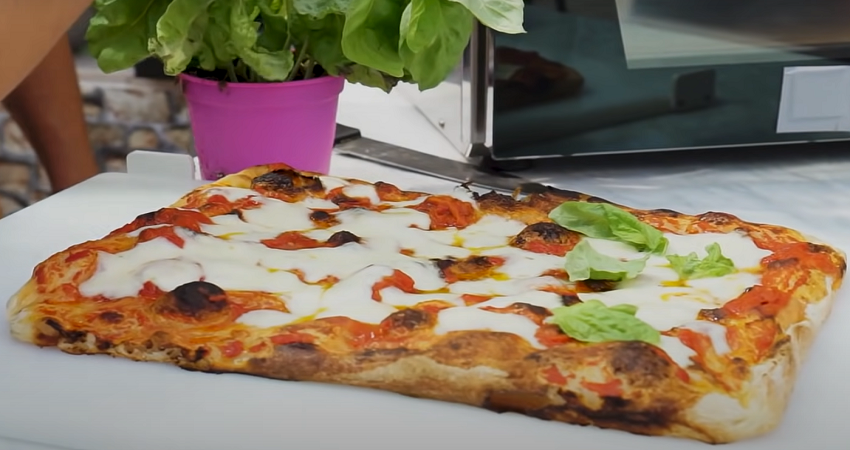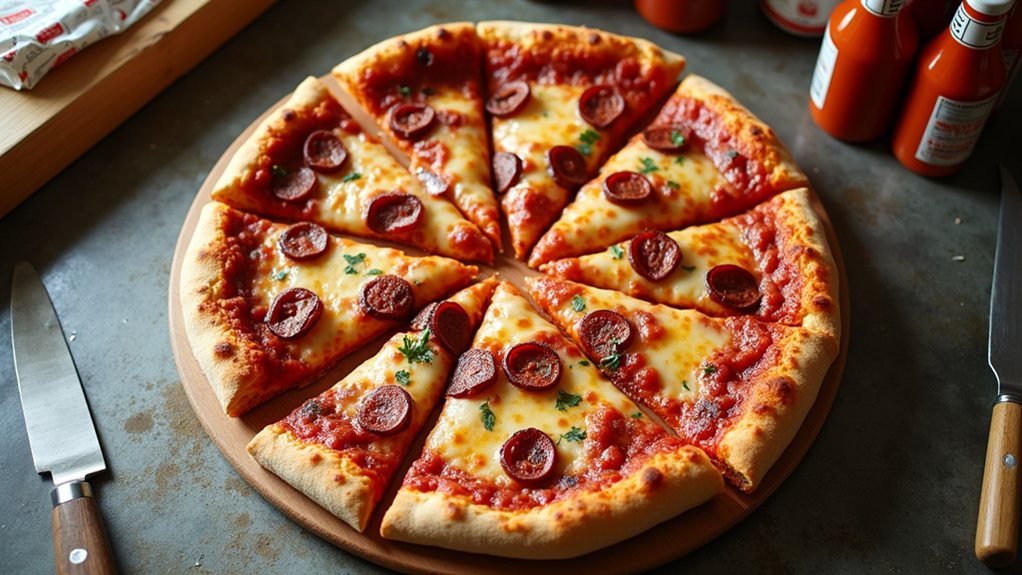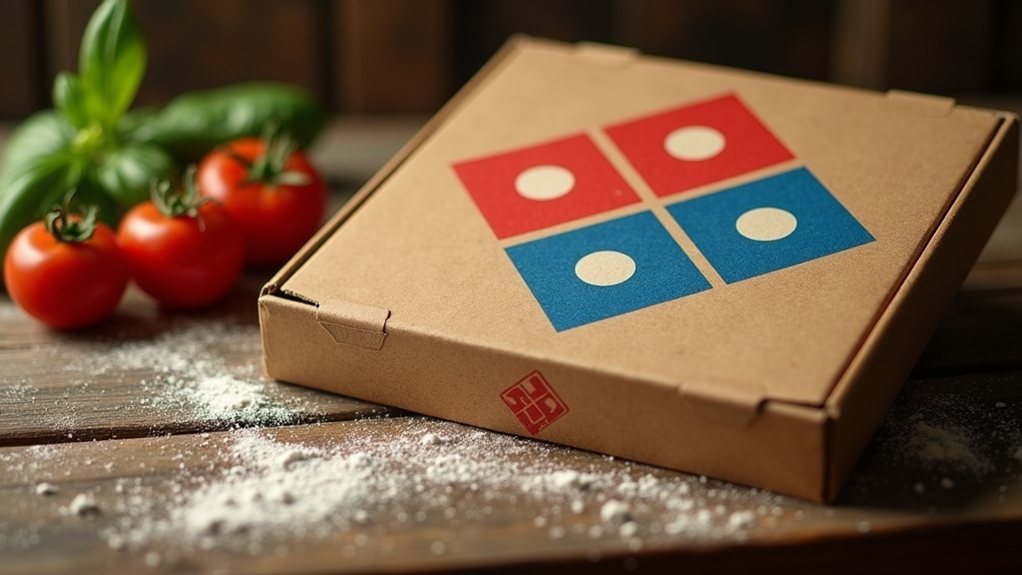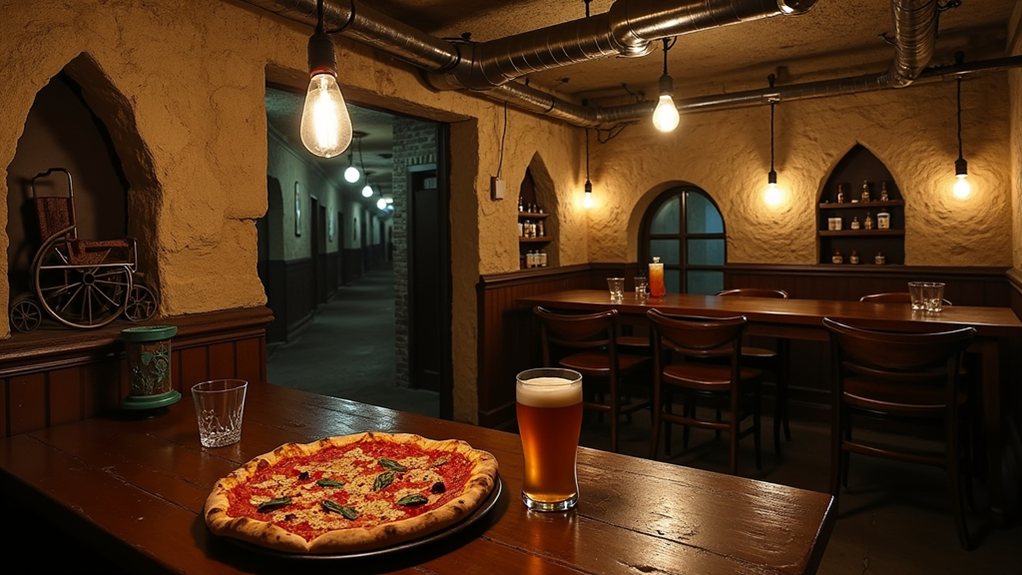I’ve been fascinated by Scarr’s Pizza since I first tasted their perfectly crafted Sicilian slice, a tribute to tradition that few pizzerias truly honor. The secret lies not just in their organic stone-milled flour but also in the meticulous triple-bake technique that transforms simple dough into a transcendent crust experience. While many attempt to recreate this style at home, understanding the foundational elements of authentic “spino” preparation changes everything about how you’ll approach your next homemade pizza.
The Sicilian Legacy: Tracing Scarr’s Pizza to Its Roots
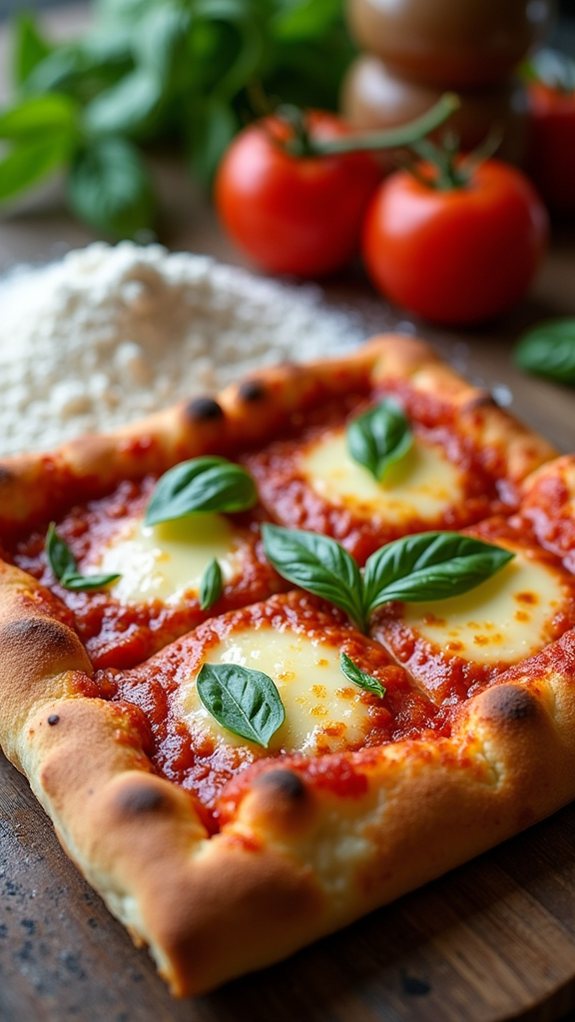
While exploring the culinary landscape of New York City, it’s impossible to overlook Scarr’s Pizza, a beloved establishment that has masterfully captured the essence of Sicilian-style pizza.
Its roots trace back to Sicily’s traditional “spino,” a simple yet flavorful dish of bread topped with sauce and breadcrumbs. This connection to heritage isn’t just about taste—it’s about honoring a culinary tradition that traveled from Mediterranean shores to American cities.
Like Chicago’s Pompei restaurant, which has served Sicilian-influenced pizza since the early 1900s, Scarr’s celebrates this legacy through quality ingredients, meticulous preparation, and respect for tradition. The restaurant’s signature rectangular pizza showcases the thick and airy crust that characterizes authentic Sicilian-style pizza.
Essential Equipment: Selecting the Perfect Pan for Sicilian Magic
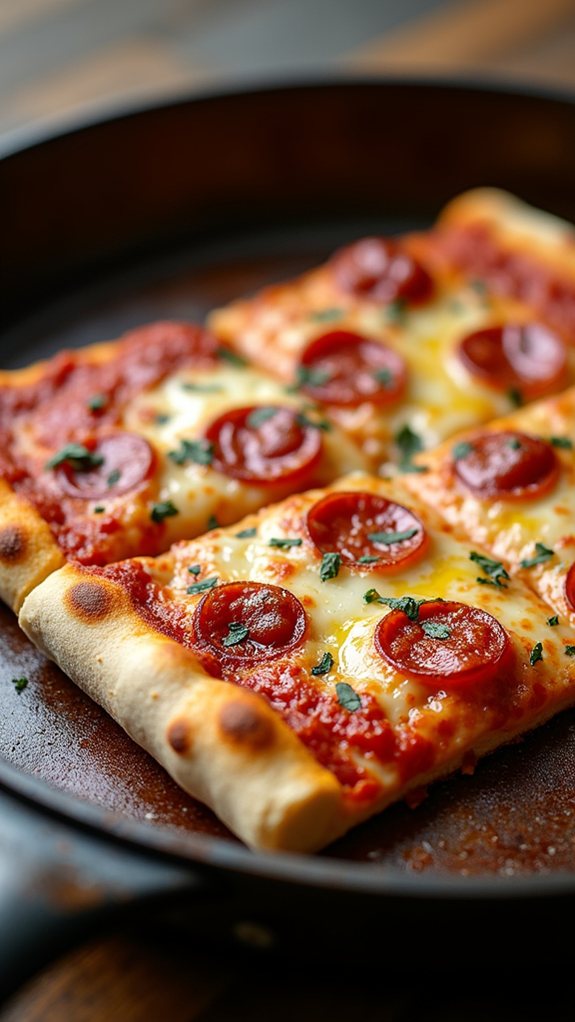
When creating authentic Sicilian pizza at home, the pan you choose serves as your most critical tool in achieving that perfect square slice with its distinctive texture and character.
I’ve found that non-stick pans with sharp angles work wonderfully, particularly steel ones that retain heat effectively.
Aluminum sheet trays don’t cut it for true Sicilian-style pizza. Instead, invest in a quality rectangular steel pan that’ll crisp the bottom beautifully while allowing the dough to rise properly.
Remember to oil it generously before adding your dough, and consider dusting it with cornmeal for that extra textural element that’ll set your homemade creation apart.
Unlike Chicago-style pizza, which uses a deep round pan for its thick buttery crust, Sicilian requires a shallow rectangular pan for its signature shape and texture.
Dough Mastery: Techniques for Light and Airy Perfection
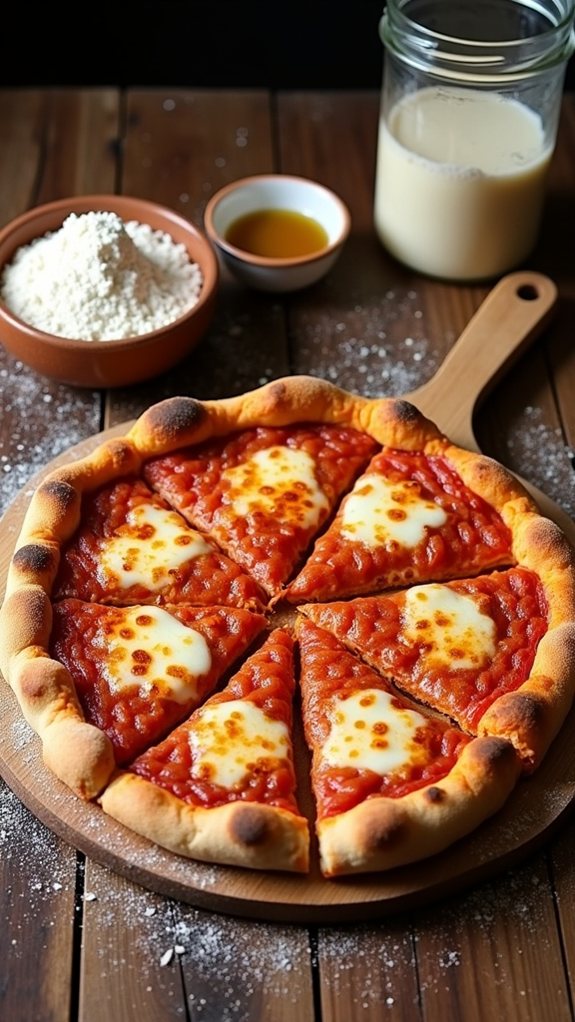
The perfect Sicilian slice starts with mastering your dough — it’s the foundation upon which everything else builds.
I combine water, yeast, and sugar initially, then fold in bread flour for that light, chewy texture we’re after. I let the mixture autolyse for 20 minutes before adding salt, then use the slap-and-fold technique to develop proper gluten structure.
The magic happens during refrigeration, where flavors develop overnight or even for several days.
When you’re ready to bake, let the dough rise in a warm spot for about two hours. This patient approach rewards you with an airy, open crumb that’s distinctly Sicilian.
Using bread flour gives the dough a strong structure that contributes to the classic thick, airy crust characteristic of authentic Sicilian pizza.
The Triple Bake Method: Elevating Your Sicilian Crust
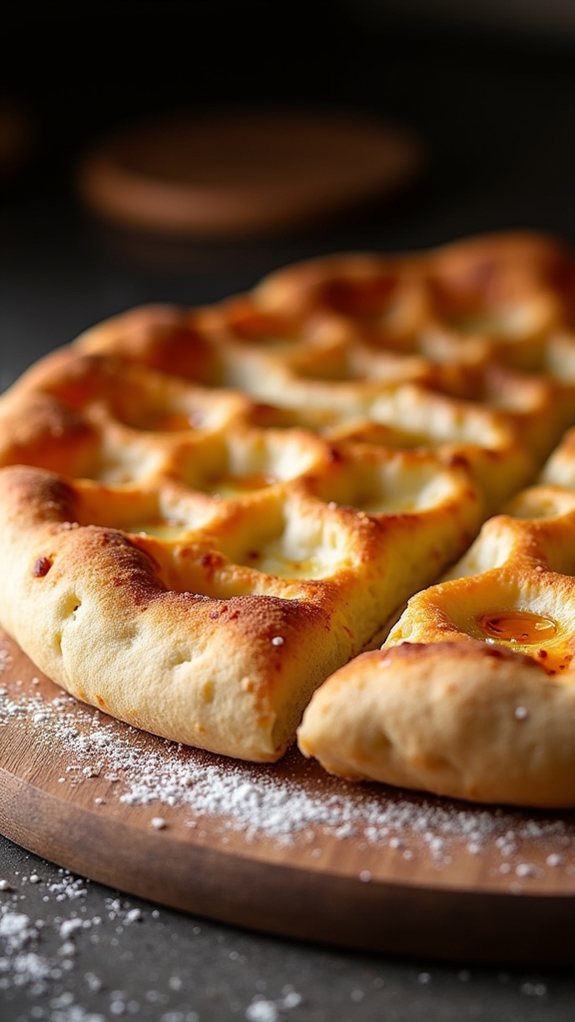
A secret weapon in my Sicilian pizza arsenal is the triple bake method, which transforms an ordinary dough into a crust with perfect texture and flavor. This technique involves three critical stages that build layers of doneness and flavor.
| Bake Stage | Temperature | Duration | Purpose |
|---|---|---|---|
| Blind Bake | 500°F | 10 min | Set crust structure |
| Cheese Bake | 500°F | 5-7 min | Melt initial cheese layer |
| Final Bake | 450°F | 8-10 min | Meld sauce and toppings |
Each stage serves a distinct purpose, creating that coveted golden undercarriage with an open, airy crumb characteristic of authentic Sicilian style. Trust me, it’s worth the extra time.
Sauce Secrets: Creating Zingy New York-Style Flavor
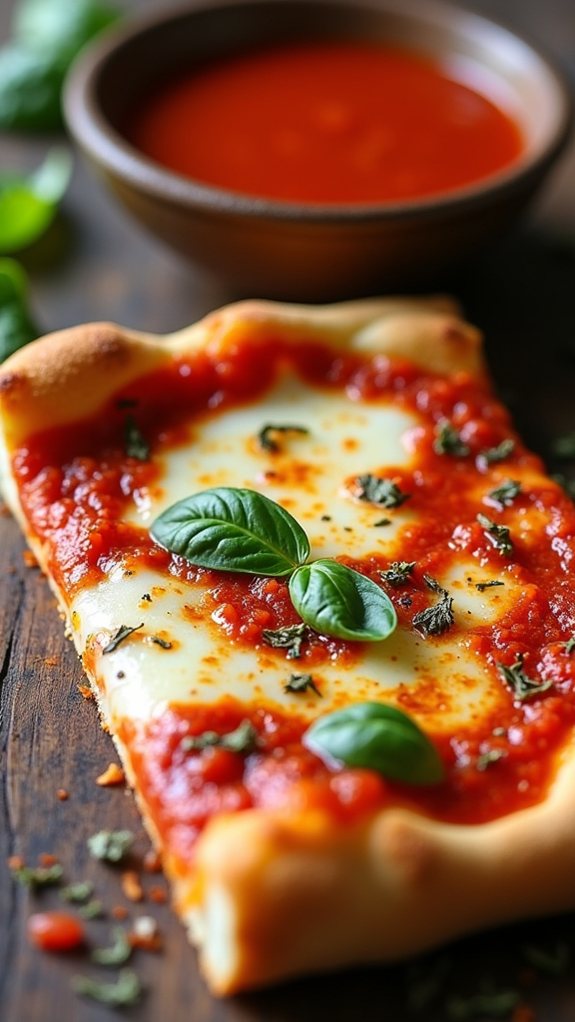
Now that you’ve mastered the triple-bake technique let’s focus on what really makes a Sicilian slice sing—the sauce.
At Scarr’s Pizza, they’ve perfected a bright, zingy New York-style sauce that’s worth emulating in your home kitchen.
The secret lies in quality San Marzano tomatoes, which provide the perfect balance of sweetness and acidity.
I mix these with minced garlic, oregano, black pepper, and just enough salt to elevate the flavors.
A drizzle of olive oil adds a richness that ties everything together.
The sauce shouldn’t be overly complex – its beauty comes from letting those exceptional cherry tomatoes shine through.
Cheese Combinations: Layering for Ultimate Texture and Taste

When crafting the perfect Sicilian slice, cheese selection and layering techniques make all the difference between good pizza and transcendent pizza. At Scarr’s, they’ve mastered this delicate balance.
I’ve found that combining low-moisture mozzarella with whole milk varieties creates that ideal melt and stretch.
The key is layering – start with a base of mozzarella directly on the blind-baked crust, then add sauce, and finish with more cheese and a dusting of Pecorino Romano for sharp, salty notes.
This triple-layer approach guarantees the cheese melts perfectly without making the crust soggy, a technique worth mastering in your home kitchen.
Community Inspired Creations: Adapting Scarr’s Style at Home
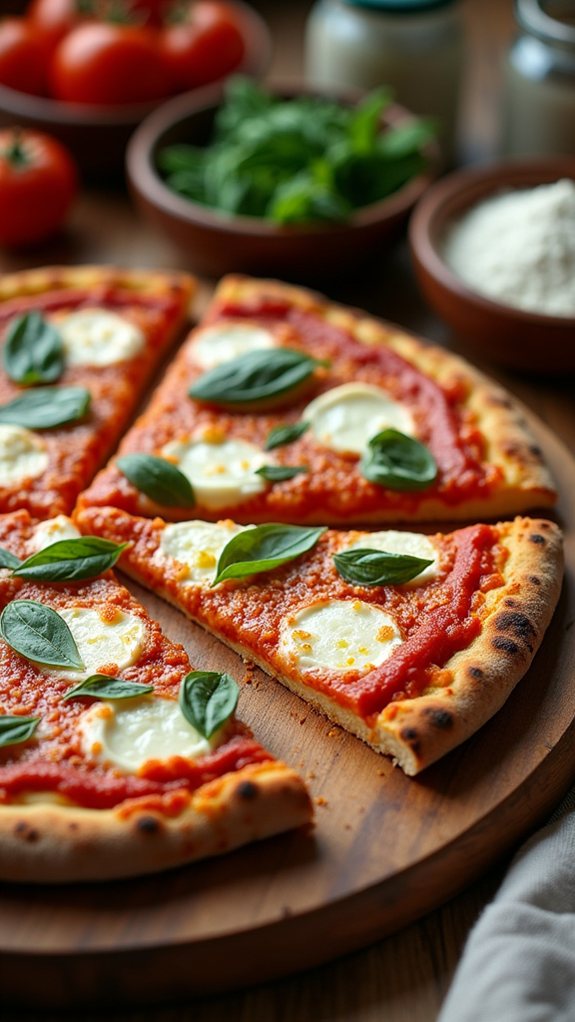
The beauty of Scarr’s techniques lies in how adaptable they are for home kitchens across America.
You don’t need professional equipment to create your Sicilian masterpiece—just patience and quality ingredients.
I’ve seen countless homebakers transform their regular sheet pans into Sicilian pizza factories, coating them generously with olive oil and cornmeal for that signature crispy bottom.
Try experimenting with local ingredients while maintaining the basic method: triple-bake technique, zingy sauce from the best tomatoes you can find, and that perfect cheese combination.
Your version might not be identical to Scarr’s, but it will carry the spirit of Sicilian tradition with your twist.
FAQs
How Does Altitude Affect Sicilian Pizza Dough Fermentation?
At higher altitudes, I’ve noticed that dough ferments faster due to lower air pressure. To maintain proper structure, you’ll need to reduce yeast amounts and fermentation times for your Sicilian pizza.
Can Gluten-Free Flour Be Used Successfully for Scarr’s-Style Pizza?
I wouldn’t recommend gluten-free flour for Scarr’s-style pizza. The distinctive light, airy crust depends on gluten development, and using gluten-free flour will result in a denser crust that won’t match the authentic texture and chew.
What Wine Pairings Complement Sicilian Pizza’s Unique Flavor Profile?
I recommend a bright Nero d’Avola from Sicily or a Sangiovese to complement the zingy tomato sauce. For white options, try Grillo or Catarratto—their acidity perfectly balances the rich, cheesy flavors.
How Does Scarr’s Maintain Consistent Quality Across High-Volume Service?
I’d say Scarr’s maintains consistency through their meticulous dough fermentation, quality ingredient sourcing, and their triple-bake technique. They’re also likely strict on staff training and preparation standards.
Are There Regional Variations of Sicilian Pizza Within Sicily Itself?
Yes, Sicily has several regional pizza variations. You’ll find sfincione in Palermo with breadcrumbs and onions, scarcity in eastern Sicily, and pizzaiolo in Syracuse with different toppings and thicknesses.
